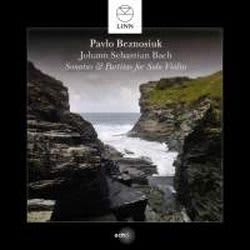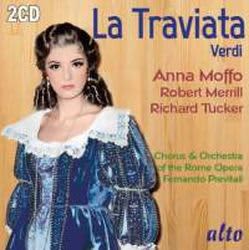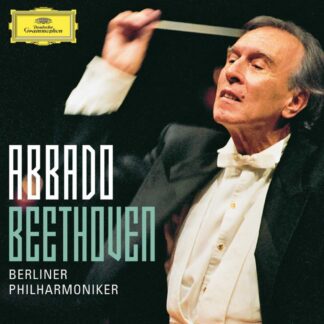Description
Artists
|
On this double album, Pavlo Beznosiuk gives a splendid performance of Bach’s renowned Solo Sonatas and Partitas for violin. Beznosiuk handles these demanding virtuosic compositions with surprising ease and agility. This seemingly effortless performance can possibly be attributed to how attuned Beznosiuk is with Bach through the music, an enchanting connection that is captured by this recording. The performances are full of passion and vigor. Beznosiuk’s interpretation and development of the musical lines of these compositions is extremely compelling and bring out the compositional strength of one of the greatest composers to ever live. Booklet notes: Art transforms us in many and varied ways, stimulating a primary sense then continuing, via countless subjective resonances, to others; the more senses art engages with the more powerful it becomes. Further, there is an internal shift we can make whereby we cease to be mere observers or “consumers” of art and enter into a personal relationship with it, forgetting the means by which we are moved. At this point the creator ceases to appear a distant and unapproachable being confined to text book or biography and we can enter into a direct and intimate contact despite our temporal separation – as we look at a canvas by Leonardo da Vinci we look into his eyes, as we read Donne or Marvell we listen quite literally to their voices, as we clandestinely sneak a touch of a sculpture by Michelangelo we brush hands with him (happily this last phenomenon is a sculptural connection afforded to violinists on a daily basis as we handle our instruments). With music, the most abstract of all the arts, this contact with the creator is at the same time more profound and much more elusive. While nobody would or could deny music’s very real potential to impact upon us on all levels the routes by which this takes place are very hard to pin down, we look on bewildered as, in response to a particular passage, goose bumps appear, our stomach knots, tears well up or we get a glimpse of that all-encompassing feeling of connection with all things and all times which Arthur Koestler described as “the oceanic sense”. Our time-defying link with the composer seems to be of a far higher order than in any other artistic endeavours, as though for a composition’s duration we literally inhabit another brain with all its experiences and associations, emotional and intellectual. In the case of Bach this “synaptic intimacy” can be quite overwhelming. Through an incredible synthesis of content and structure Bach offers a world view which is breathtaking in its scope but also so natural and organic that we stand back in wonder as if to say “why didn’t I see/ hear that”? The truth is obvious once someone shows you the way. To anyone studying Bach’s Sonatas and Partitas for solo violin this inexorable forward-thrusting logic actually presents a serious obstacle to well structured practise, many violinists will attest that no sooner have you started work on, say, the G minor fugue with the intention of perfecting a few particular bars that you find yourself playing on helplessly (but happily) to the end of the piece! By dint of Bach’s knowledge of and prowess on the violin all violinists are afforded an opportunity for a kinaesthetic contact with him that non- violinists, alas, cannot experience. As he guides our fingers over the four strings, taking us by the hand through these incredible creations, the notion of “interpretation” seems irrelevant; the structure is so profound and so perfect we can only approach the music as a we would a Socratic dialogue, asking questions of the master and receiving successive mind-expanding answers which lead eventually to musical enlightenment. The exact nature of this wordless conversation is magical and elusive but its profound effect cannot be denied, like the darshan of a sage from which we leave respectfully, humbled, changed. © Pavlo Beznosiuk, 2010 Bach’s sonatas and partitas for solo violin were completed at Cothen in 1720 and represent the culmination of the German tradition for unaccompanied violin, a tradition which combined extreme virtuosity with the German love of complex contrapuntal textures. What takes these works even beyond the level of difficulty of the cello suites (composed around the same time) is the complexity of the double stopping, especially in fugal movements. The three sonatas are all based on the four-movement Italian model (slow-fast-slow-fast) and are analagous to the violin sonatas “in church style” of Corelli. The preludes to the sonatas in G minor and A minor contain extremely florid ornamentation over a relatively simple chordal “story”. While the elaborations that Corelli offered for his sonatas were by means of advice or example, Bach’s are mandatory, the apparently spontaneous ornaments actually forming a musical argument in their own right, responding to one another, matching and contrasting. The C Major prelude adopts a somewhat different style, sounding rather like a string sinfonia with its expansion – in the first five measures – from one to four voices. Virtually every bar contains the same dotted figuration (a sense of motivic tautness that is evident in Bach’s very earliest keyboard and choral works); this gives the piece a thread that sustains our attention from the beginning to the end. Among the most remarkable movements in Bach’s unaccompanied string music are the three fugues that form the second movements of these sonatas. Not only does the medium of the single violin have to present the multiple entries of a fugal exposition, it has also to give the sense of contrast, light and shade in the episodic sections that take us momentarily away from the subject. There may well be a cross-over between Bach violin fugues and those he played on the organ: certainly the G minor one appears in an organ version and it might well be that the fugue from the famous Toccata and Fugue in D minor began as a violin piece. It would be interesting to know if anyone could have guessed that the G minor fugue was originally written for violin had only the organ version survived. It contains a remarkable variety of figuration and concomitant playing techniques, thus challenging the player to preserve a sense of continuity. Even more ambitious, in terms of compositional and technical challenge, is the C Major Fugue. The seemingly innocuous subject (perhaps the dullest of the three) is soon found to combine with itself at close distance and, just as we think Bach has exhausted all the possibilities of both player and musical material he presents the fugue afresh with the subject inverted (i.e. where one note originally went up or down the new version does precisely the opposite) together with an attempt at inverting the accompanying chromatic melody. Bach gives us three different answers to the character of the third movement: the G minor sonata presents and airy Siciliano, a dance so beloved of Vivaldi in his concertos and sonatas. As usual, Bach manages to add more complex figuration than would usually be expected without destroying the underlying lilt of the Siciliano rhythm. The A minor sonata’s Andante presents us with a vocally-conceived aria complete with strumming chordal accompaniment. The Largo of the C Major sonata is equally lyrical but – with its virtually continuous pattern of sixteenth-notes, often passed from one part to another – it is more specifically instrumental. We hear Bach using an instrumental medium that is normally used for one line of music in two or three parts, and out of this – as if magically – emerges what seems to be a single melodic line. The idea of perpetual motion is even more strongly evident in the finales of these sonatas: the first plays on the metrical ambiguity of the opening figuration and Bach’s very precise bowing instructions are designed to tease us in the course of the piece with an almost jazzy play of unpredictable note groupings. The A minor Finale is more orthodox rhythmically but plays on the repetition of the opening material, together with piano echos. Much of the material is suffused with an infectious dactylic pattern (long-short-short) that Albert Schweitzer aptly christened Bach’s “joy” motive. The C Major Finale, in triple time with some matching phrasing, is perhaps the most dance-like of the three. Like the G minor Finale it makes wonderful use of varied bowing patterns and also exploits the string-crossing potential of the violin medium. The D minor Partita is dominated by the Chaconne that provides the closing movement, perhaps the most striking work for violin before the nineteenth century. Bach had plenty of precedents in virtuoso string music (most notably in a similar ground-bass movement by Biber). However, he could also play on his knowledge of similar works for organ and harpsichord, most notably by Buxtehude, and already represented by his own great Passacaglia in C minor for Organ. The Chaconne displays a veritable catalogue of musical figures, moods and violinistic passages, all heard within the ambitus of the same repeating phrase. Yet the whole piece forms a coherent arch, moving to the sublime section in the major mode and returning to the mood and idiom of the opening. It is as if Bach were providing us with an encyclopaedia of musical sounds, yet ordered with tremendous dramatic poise and rhetorical pacing. The Partitas in B minor and E Major represent two basic conceptions of the German suite: the B minor one (No. I) reflects the grouping of dances that had been traditional for some thirty years (Allemanda, Corrente, Sarabande), but instead of the closing Gigue there is a more modern (indeed danceable) dance, in the style of a Borea (or Bouree, in France); the E Major Partita (No. III) is almost entirely in the modern style, although – as if in reciprocation with the first partita – it ends with the traditional Gigue. Another direct contrast between the two partitas is their differentiation of two national styles, most immediately evident in the movement titles: in the first partita they are all Italian and in the third they are French. Each of the dances in the first partita is followed by a Double a version of the same basic movement but in generally faster note values and often in a different style: for instance the opening Allemanda presents a grand texture of dotted notes and separate bows (which, despite the Italian title, recalls the French ouverture), but its Double consists of continuous faster notes slurred, rather than detached, by the bow. The Corrente is an elegant dance encouraging the violinist to swing across the strings; its Double is marked to be considerably faster and more impetuous. The solemn Sarabande becomes a perpetual movement where the notes are grouped in threes rather than twos. Perhaps the closing Double comes closest to its model, the Bouree, filling in the gaps between the notes and providing a sense of culmination to end the suite. In all, this first partita exemplifies the improvisatory skills that instrumentalists were once taught, the ability to play a new, often faster version of an existing piece, not unlike jazz performance today. Moreover, this process also shows us how Bach, as a composer, was wont to take existing material and develop it in entirely new directions, almost concealing its origins. The third partita begins with one of Bach’s most spectacular pieces for solo violin, a Prelude that would later find a full-dress version as the sinfonia to Cantata 29. It is interesting to compare the two, since the sumptuous punctuation for trumpets and drums, the instrumental countermelodies and accompaniments, seem not to alter this single-line version. We almost already hear the entire texture in the resonance of the solo violin. The Loure is a dance that was made fashionable in the dramatic works of French contemporaries such as Rameau. It is stately, almost haughty, developing a melodic line out of relatively short motives and double-stopping. Bach only wrote two Loures, the other being in the G Major French suite for harpsichord. Gavottes and Minuets he wrote aplenty though: this Gavotte is set in the popular rondo form, in which the dance is interspersed with episodes in contrasting characters. It also contains Bach’s sole indication of violin fingering, something that suggests he was able to play these pieces himself. The two minuets also present contrasting characters, the first aristocratic and archetypally “French,” the second in a “lower” style of the musette, a minuet that imitates the drone of a bagpipe. The Gigue provides the traditional rousing conclusion to the dances: it is of a type that was used in France, but one that was probably too unpredictable in rhythm and phrasing to have been danced in practice. © John Butt, 2010 |









